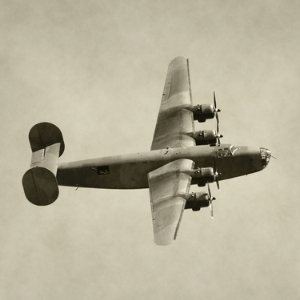Dissent Black, Burton | Date decided 1946 | |
 | ||
Full case name United States v. Causby Citations 328 U.S. 256 (more)328 U.S. 256 Prior history 104 Ct.Cls. 342, 60 F.Supp. 751, reversed and remanded. Majority Douglas, joined by Reed, Frankfurter, Murphy, Rutledge Similar Penn Central Transport, Pennsylvania Coal Co v Mahon, Lucas v South Carolina, Tahoe‑Sierra Preservation Council - I, Nollan v California Coastal C | ||
United states v causby part 1
United States v. Causby 328 U.S. 256 (1946) was a United States Supreme Court Decision related to ownership of airspace above private property. The Court held that title to land includes domain over the lower altitudes. The United States Government claimed a public right to fly over Causby's farm, while Causby argued such low-altitude flights entitled the property owner to just compensation under the takings clause of the Fifth Amendment." The findings were two-fold. The court rejected the United States Government's assertion to "possess" and "control" all airspace above private lands, and it nullified the doctrine that property extends indefinitely upward.
Contents
United states v causby
Background
Thomas Lee Causby was the owner of a chicken farm that was located less than a half mile from the end of the runway of Lindley Field, an airstrip in Greensboro, North Carolina. During World War II, the United States military flew planes into the airstrip and as low as 83 feet above Cuasby's Farm.
The low-flying military aircraft, terrified Causby's chickens so much that the chickens stopped laying eggs and some ran into the sides of the chicken coop leading to their deaths. Causby lost 150 chickens, and had to stop farming. The federal government offered $2,000 to Causby for an air easment, but Causby considered it too little. Causby sued the government for compensation under the Fifth Amendment's takings clause and won in the lower courts.
Under common law, a person who owns the soil also owns the space indefinitely upward. ":ad coelum or to the heavens".
In defense, The US referenced the 1926 Air Commerce Act in which the US government claimed to 'possess' all airspace.
The United States Court of Claims ruled that a property owner has the right to prohibit public use of air space above the owner's land "that interferes with his right to light, air, view, or the safe and peaceful occupation and enjoyment of his land." The Court of Claims ruled that Causby was entitled to just compensation for the government haven 'Taken' his property by allowing overflights.
The United States appealed the ruling against them, and the Supreme Court agreed to review the case, regarding the contradiction between the common laws of property ownership and the Federal claim to possess all airspace above the United States.
Holding
The United States Supreme Court rejected the government's claim to 'possess' the space down to ground level. The Court held low altitude flights to be a direct invasion of [the landowner's] domain, and that a "servitude has been imposed upon the land" by frequent low-altitude flights. The Court also recognized that a claim of property ownership indefinitely upward "has no place in the modern world." Thereby rejecting "ad coelum"
The court held the public's right of flight does not extend down to the earth's surface. finding "if the landowner is to have full enjoyment of the land, he must have exclusive control of the immediate reaches of the enveloping atmosphere. Otherwise, buildings could not be erected, trees could not be planted, and even fences could not be run" …“The fact that he does not occupy [space] in a physical sense -- by the erection of buildings and the like -- is not material. As we have said, the flight of airplanes, which skim the surface but do not touch it, is as much an appropriation of the use of the land as a more conventional entry upon it."
On remand, the Court of Claims was tasked with defining the value of the "property interests" that had been taken from Causby by flyovers. Because the lowest plane flew at 83 feet, and because flights above 365 feet were considered in the public domain, the Court needed to determine the value owed the Farmer for public use of his airspace between 83 and 365 feet. The Court did not need to compensate the farmer for use below 83 feet, because no such use was granted by the Federal Agency.
Dissent
Justice Black, joined by Justice Burton, dissented with the decision. Black wrote that the majority opinion created "an opening wedge for an unwarranted judicial interference with the power of Congress to develop solutions for new and vital national problems." The minority opinion was predicated on interference with private property being resolved through tort law, rather than a constitutional review. However, it was the US government who filed the appeal based upon a claim of ownership to the airspace, which the court roundly rejected at lower altitudes.
